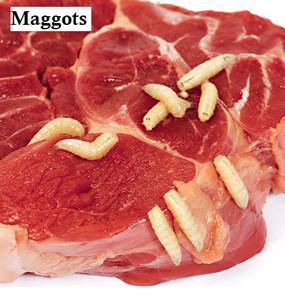In the classic he said/he said situation the owner of a popular New York diner, George’s, says that an restaurant inspector started making up infractions after the owner began documenting what he believed was an unfair inspection. According to the New York Post, owner Bill Koulmentas challenged some of the violations he was being cited for (including poor sanitation and temperature abuse of time/temperature control foods) and pulled out his iPhone when he felt the inspector was going to far. End result was 65 demerit points and a closure.
“They can do anything they want,” [Koulmentas] said. “Something’s out of control here. It’s lies, lies, lies.”
Koulmentas said the ordeal that prompted him to break out his cellphone camera began at about 9:30 a.m. yesterday, when Inspector Kenneth Reid began writing one trumped-up violation after another.
When the inspector crawled under a dishwasher and reported finding 13 roaches in the wall, Koulmentas said he did the same and couldn’t spot anything.
“I’ll give you $1,000 if you show me a roach,” Koulmentas protested.
Having experienced a similarly overzealous inspection a month earlier, Koulmentas said he decided to document what was happening.
Out came the iPhone.
Health Department spokesman John Kelly defended the inspection as legitimate, noting that George’s — which has been in business since 1950 — had accumulated 56 points under another inspector last month.
“The inspector recommended closing the place [back then],” reported Kelly. “The supervisor said let’s give him an opportunity to fix the problem. Basically, he caught a break.”
In August — barely five months ago — the eatery was awarded the top grade of “A.”

.jpg) lot. You have people who throw up—they throw up a lot. … You see people cheating on their spouses, overhear bits of conversation. …
lot. You have people who throw up—they throw up a lot. … You see people cheating on their spouses, overhear bits of conversation. … and health and safety offences."
and health and safety offences." shops and other food businesses were served with closure orders last year — the highest tally since it was established in 1999.
shops and other food businesses were served with closure orders last year — the highest tally since it was established in 1999..jpg) egg rolls."
egg rolls." proof.
proof..jpg) consumers to sometimes life-threatening illnesses.
consumers to sometimes life-threatening illnesses..jpg) official action because they thought they were not allowed to, the report said.
official action because they thought they were not allowed to, the report said. machine and 33 inside the ICEE beverage machine.
machine and 33 inside the ICEE beverage machine. April 15, the citation was for having no soap in the dispenser at the washing station.
April 15, the citation was for having no soap in the dispenser at the washing station. would have to find the money in its existing budget, which is expected to see more cuts this year as Congress and the White House aim to trim federal spending.
would have to find the money in its existing budget, which is expected to see more cuts this year as Congress and the White House aim to trim federal spending.